Polyurethane is a sealer that produces a water-resistant coating over the surface and protects it from moisture, water, and scratches.
You can apply polyurethane on metal, but you must sand and prime the surface before applying it. It’s recommended to use exterior polyurethane for outdoor surfaces, and water-based polyurethane for indoor metal surfaces.
To apply polyurethane over metal, clean the surface, sand the surface, apply primer, mix the polyurethane, apply polyurethane, and sand between coats.
Does Polyurethane Prevent Rust?
Polyurethane does prevent rust on metal because it forms a clear moisture-resistant finish that prevents moisture from penetrating or affecting the surfaces. Since moisture can’t penetrate the metal surface, rust won’t be produced.
Rust is produced when a surface is exposed to water, air, or an acidic substance. If you can prevent water from penetrating the metal surface, rust won’t be produced.
Exterior polyurethane is one of the best sealers as it forms a water-resistant layer over the surface and prevents water (or moisture) from soaking into it.
Don’t use normal (or interior) polyurethane for outdoor metal surfaces as the weather elements will gradually ruin the finish and make it less durable. With time, the finish will vanish and expose different parts of the surface to water or weather elements.
Rust damages metal faster than anything else. So, when choosing a finish for it, you must pick one that’s rust-resistant.
Related Read: How To Paint Concrete With Polyurethane Paint?
How To Apply Polyurethane On Metal?
To apply polyurethane on metal, do the following things.
- Clean the Surface.
- Sand the Surface.
- Apply Primer.
- Mix the Polyurethane.
- Apply the Polyurethane.
- Sand Between Coats
1. Clean the Surface
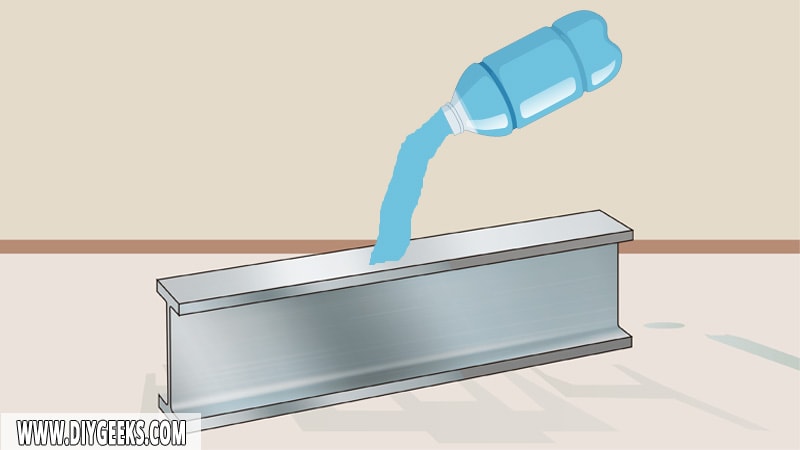
The metal surface must be clean and free of dust and rust. If it’s dirty, the dirt will show once the polyurethane dries as it’s a clear coat (it has no color).
To clean the metal surface before sealing, do the following things.
- Wash the surface with mild detergent, water, and a sponge.
- Apply the mild detergent over the surface, and use the sponge to remove the dust.
- After you are done, rinse the surface with clean water.
To remove rust from metal, spray white vinegar over the surface, wait a few minutes, and remove the white vinegar residue with clean water. You can use rubbing alcohol as an alternative to white vinegar.
After removing dust and rust from it, let the metal dry. After, use a damp rag to remove any leftover dirt or grime.
2. Sand the Surface
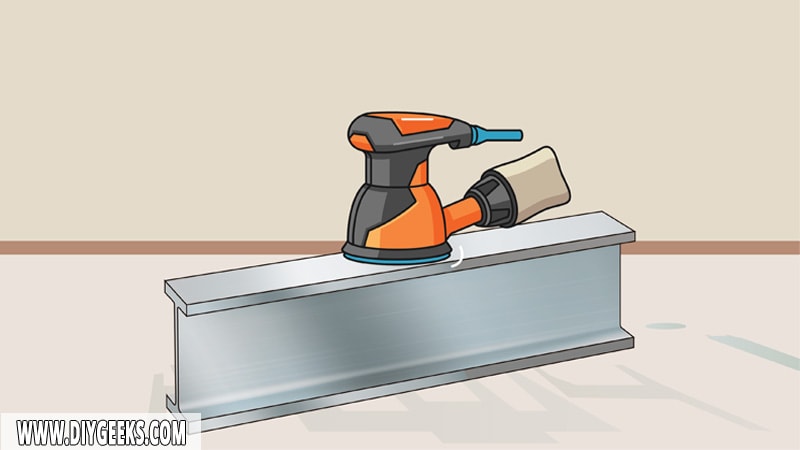
Sanding will remove any imperfections or bumps the surface may have.
To sand the metal, use sandpaper designed for metal surfaces. Diamond sandpaper is a good choice.
You can either dry sand it by rubbing the sandpaper against its surface repeatedly. Or, wet sand it by using water and waterproof sandpaper.
Metal blasting (or sandblasting) is an alternative to sanding. Sandblasting refers to spraying sand at high pressure (and speed) on the surface and removing imperfections and bumps from it. But, sandblasting is recommended for large outdoor surfaces.
After sanding or blasting the surface, remove the dust on the metal using a vacuum.
3. Apply Primer
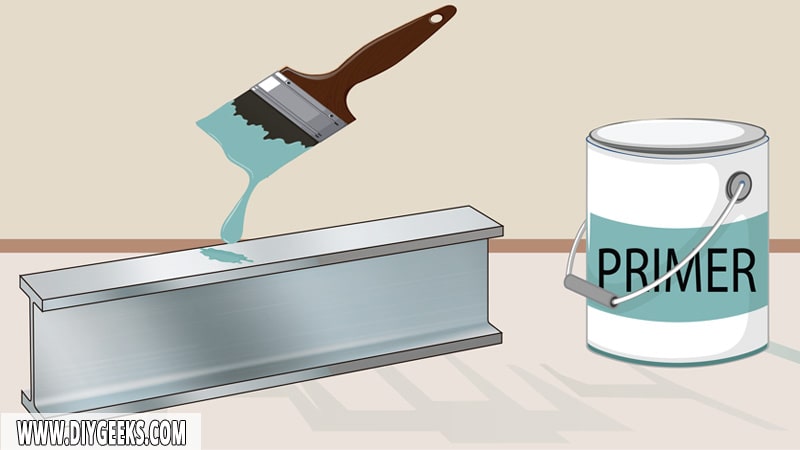
To get better adhesion, apply one coat of primer over the metal before sealing it. Polyurethane doesn’t stick well to bare metal, so having an undercoat (primer or paint) improves the adhesion.
To prime metal, use a self-etching primer or epoxy primer. Using a paintbrush apply 2 coats of primer. If you use an epoxy primer, ensure that it is designed for metal surfaces.
Related Read: Can You Apply Polyurethane With a Rag?
4. Mix the Polyurethane
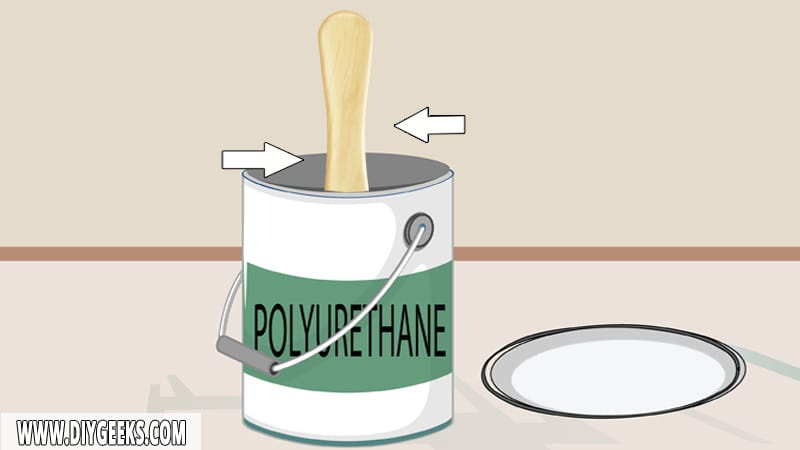
Stir (or shake) the polyurethane in the container to get a consistent flow. You can use a turning stick or paint mixer for this.
For water-based polyurethane, you don’t need to use too much force while stirring it. But, since oil-based polyurethane is thicker, you must use a bit more force while stirring. It’s recommended to use a paint mixer for it.
Related Read: How To Tint Polyurethane Paint?
5. Apply the Polyurethane
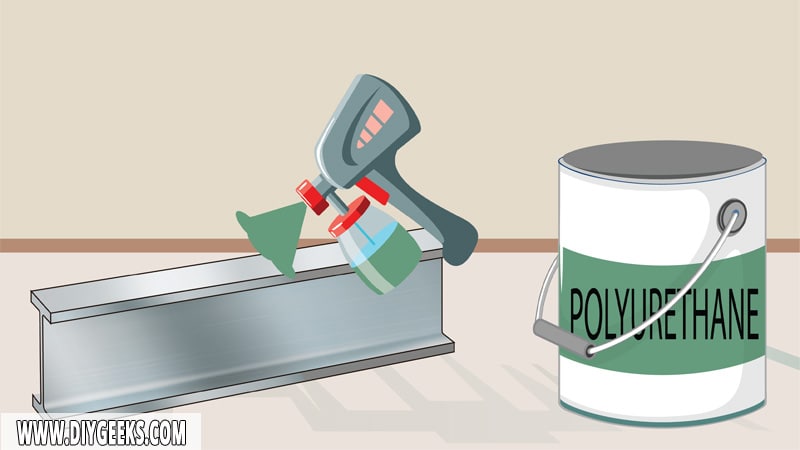
To apply polyurethane, use a paintbrush or paint sprayer. Use a synthetic bristled brush as its bristles as made of synthetic materials and apply polyurethane smoothly and evenly. You shouldn’t apply it with a roller to metal surfaces because the finish will be riddled with bubbles.
You must apply thin coats of polyurethane. So, use light brush strokes for paintbrushes or small nozzles for sprayers.
6. Sand Between Coats
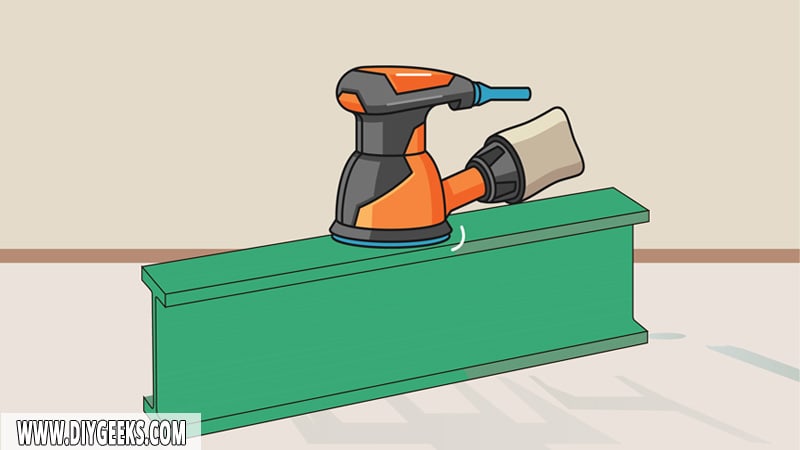
The sealer can accumulate dust or dirt while drying, so you must sand between coats to remove the dust or dirt.
To sand between polyurethane coats, use fine-grit sandpaper (220-grit). Fine-grit sandpaper only removes the imperfections and bumps from the coating and not the entire finish. Avoid using coarse or medium-grit sandpaper as it can damage it.
Once the first coat dries, sand it, and apply the next one. You need three coats of polyurethane over non-porous surfaces. Don’t sand the final coat.
Does Polyurethane Waterproof a Metal Surface?
No, polyurethane doesn’t waterproof a metal surface, instead it makes it water-resistant. Though the sealer is thick and strong, it still has some porosity and will allow water to pass through with time.
Polyurethane is water-resistant and prevents water absorption for a long time. But, polyurethane isn’t fully waterproof and will allow water to pass through after a while.
The water resistance levels of polyurethane depend on the type you use. For instance, exterior polyurethane has impressive water-resistant qualities and will prevent water absorption for a long time.
On the other hand, water-based polyurethane is water-resistant but will allow water absorption faster. The more water-resistant the sealer is, the more rust-resistant it will be.
Does Polyurethane Stick To Aluminum?
Polyurethane doesn’t stick to aluminum surfaces without sanding or priming. Aluminum has a slick texture so polyurethane can’t stick properly. It may stick initially but it will soon peel off.
Lightly sand the aluminum to create tiny holes for the sealer to penetrate too, and apply a coat (or two) of primer to create an undercoat and improve the adhesion.
To apply polyurethane over aluminum, do the following things.
- Wash and clean the aluminum surface to remove dirt or grime.
- Sand it with medium-grit sandpaper and then with fine-grit sandpaper.
- Apply self-etching primer.
- Sand the primer surface once it dries.
- Apply polyurethane over aluminum.
Can You Use Polyurethane over Painted Metal?
You can use polyurethane over painted metal to protect the paint and surface from scratches, water, and rust. But, you must sand the painted surface before applying the sealer.
To sand painted metal, use fine-grit sandpaper (240-grit) and above. After sanding, use a shop vac to vacuum the dust produced by sanding. If you don’t sand it, the sealer won’t adhere well to the surface, and the finish will be uneven.
The painted surface is riddled with dust particles that can prevent the sealer from sticking. So, when you sand, you remove the dust and scratch the paint a bit to increase the adhesion.
Polyurethane will protect the paint from scratching, handling, water, and cold temperatures. Without a sealer, the painted metal surface will get damaged by weather elements.


